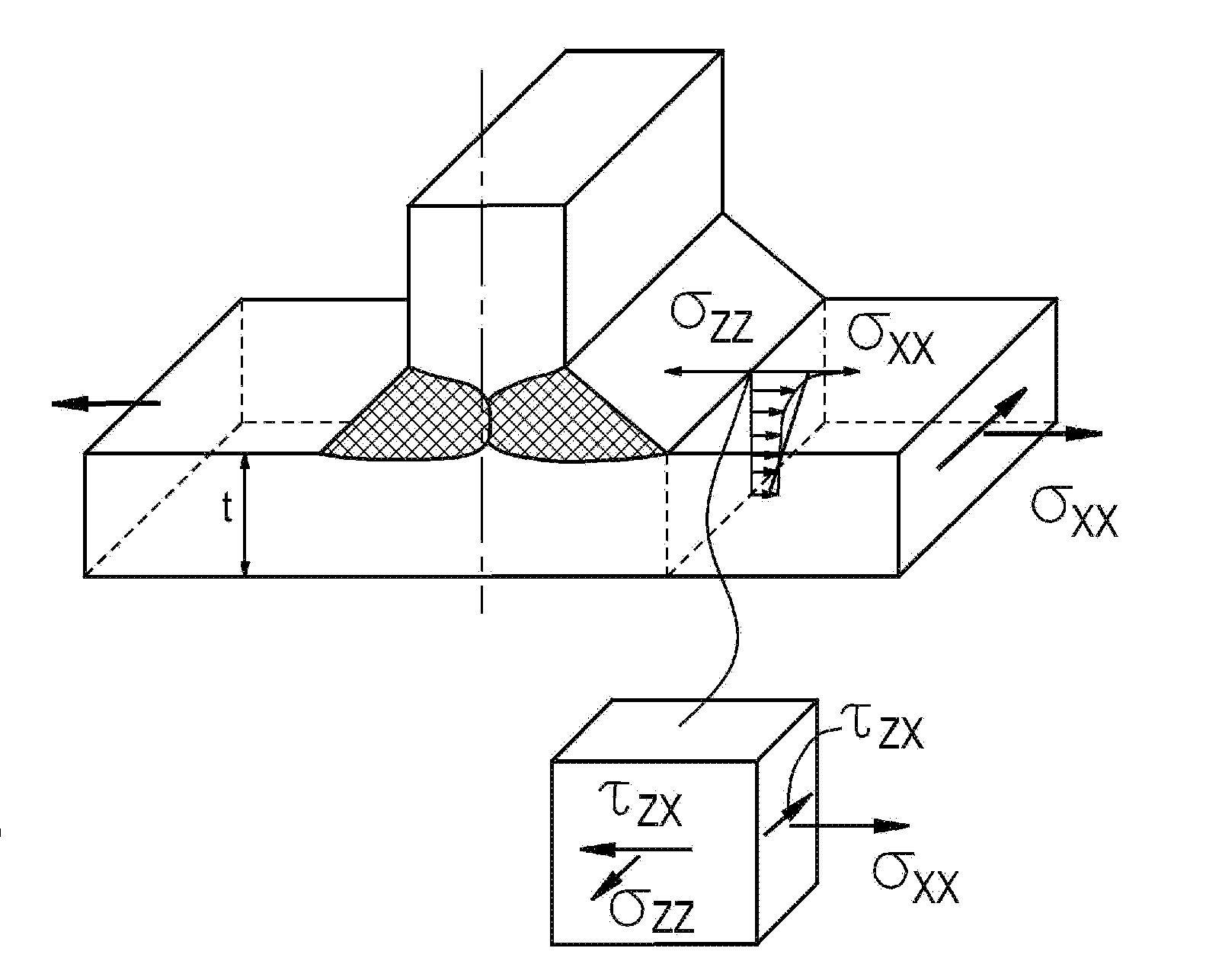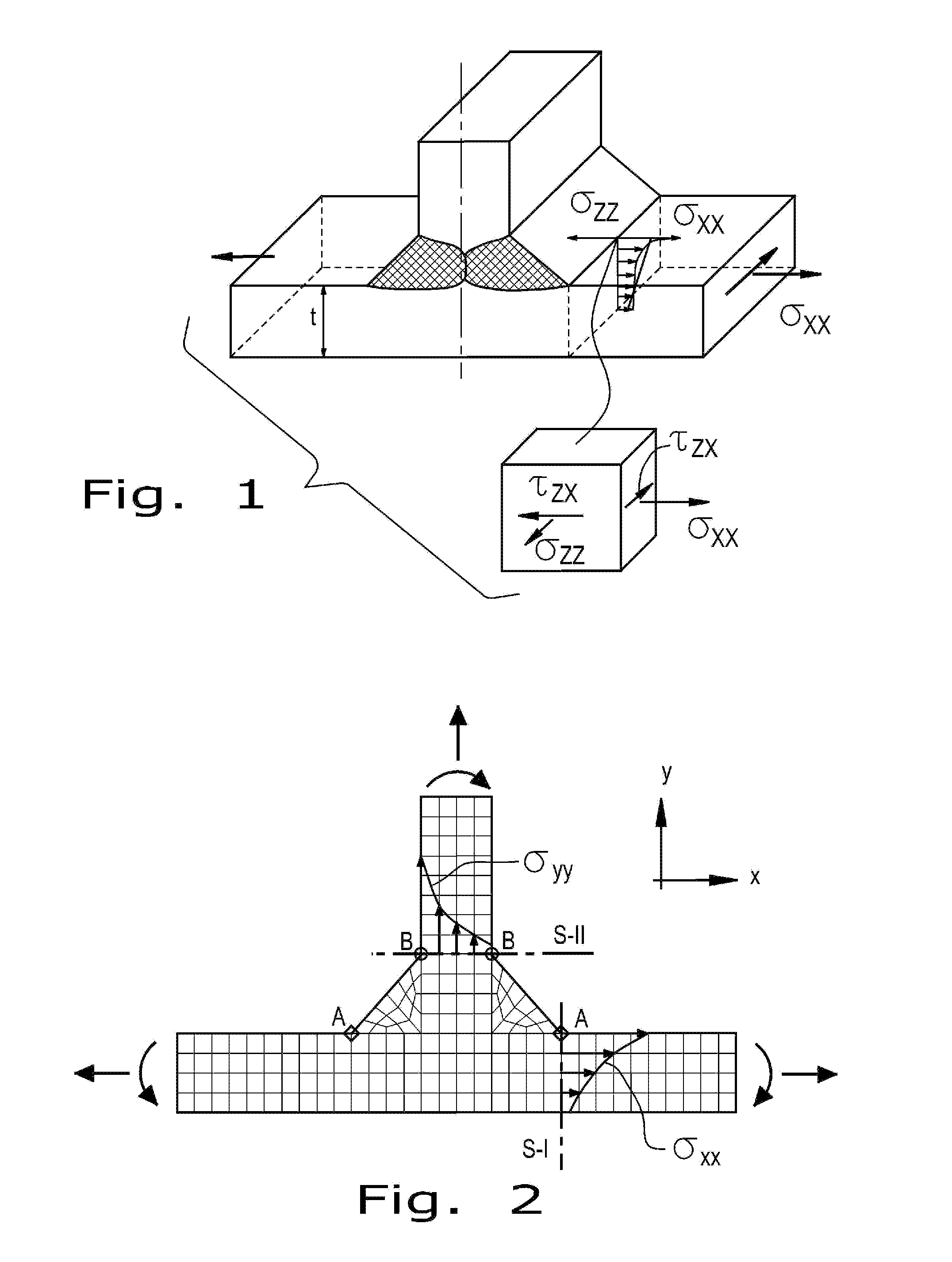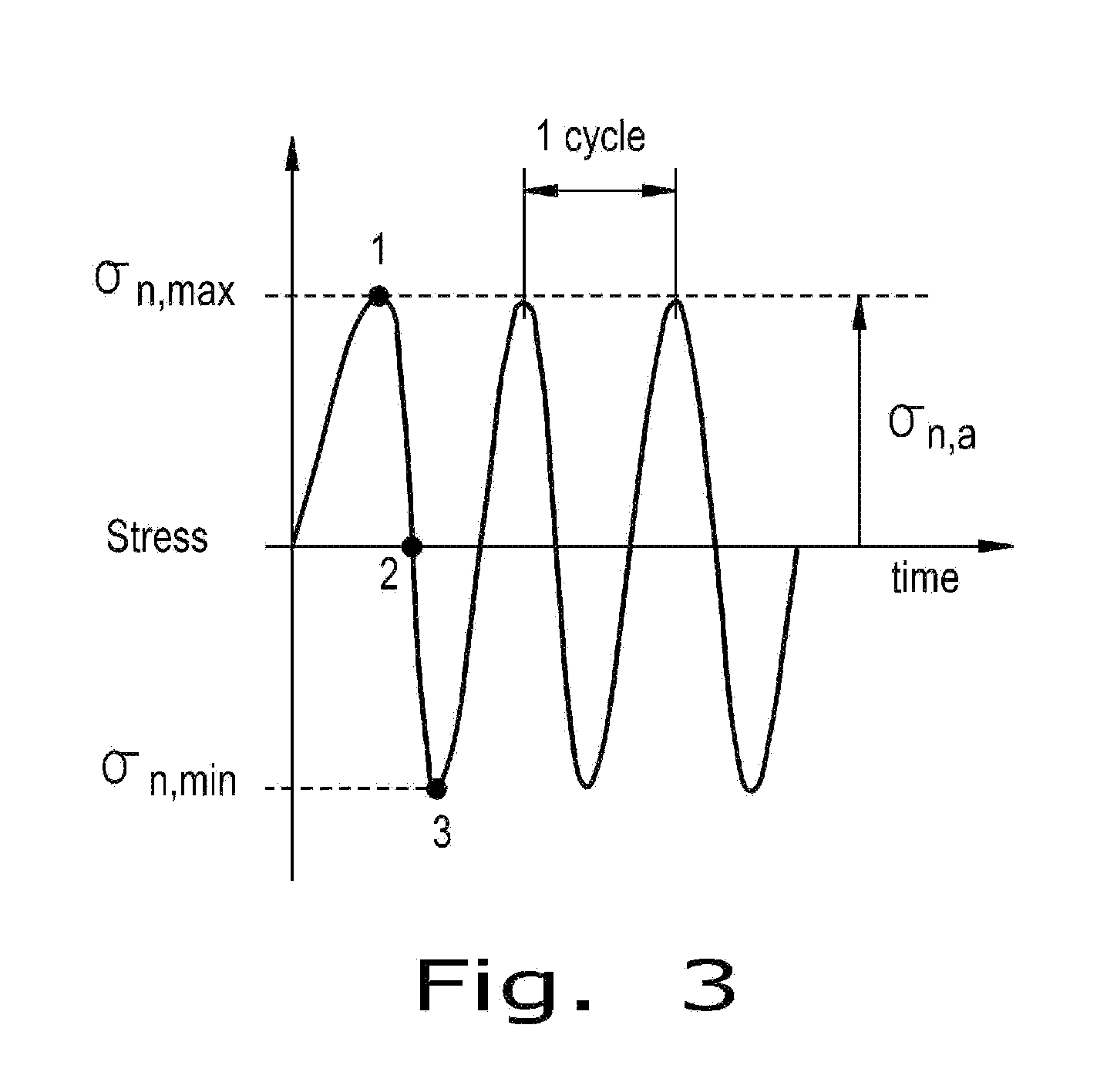Method for the prediction of fatigue life for structures
a technology for structures and life, applied in the direction of structural/machine measurement, instruments, force/torque/work measurement, etc., can solve the problems of fatigue test data loss, structural component overdesign, and current methods that do not predict the variation in fatigue life, so as to reduce fatigue strength
- Summary
- Abstract
- Description
- Claims
- Application Information
AI Technical Summary
Benefits of technology
Problems solved by technology
Method used
Image
Examples
Embodiment Construction
[0036]Referring now to the drawings, the method of the present invention for determining the fatigue life of a structure will be described in greater detail. In the illustrated embodiment, the structure is assumed to be a welded structure, but could be a different type of structure for which it is desirable to determine a fatigue life associated therewith. For example, the structure could be a plate with one or more holes causing localized stress concentrations.
[0037]The welded structure shown in FIG. 1 is assumed to be a 3D geometry of a double fillet T-joint including all geometrical details. Such a structure can be often modeled using either 3D coarse or 3D fine FE mesh. When the coarse FE mesh is used the weld toe is modeled as a sharp corner as shown in FIG. 2. Critical cross sections, i.e., all sections containing the weld toe and the critical points in those sections are denoted by points A and B in both the attachment and the base plate, respectively. The cross section S-I r...
PUM
| Property | Measurement | Unit |
|---|---|---|
| fatigue strength coefficient | aaaaa | aaaaa |
| fatigue strength exponent | aaaaa | aaaaa |
| cyclic modulus of elasticity | aaaaa | aaaaa |
Abstract
Description
Claims
Application Information
 Login to View More
Login to View More - R&D
- Intellectual Property
- Life Sciences
- Materials
- Tech Scout
- Unparalleled Data Quality
- Higher Quality Content
- 60% Fewer Hallucinations
Browse by: Latest US Patents, China's latest patents, Technical Efficacy Thesaurus, Application Domain, Technology Topic, Popular Technical Reports.
© 2025 PatSnap. All rights reserved.Legal|Privacy policy|Modern Slavery Act Transparency Statement|Sitemap|About US| Contact US: help@patsnap.com



